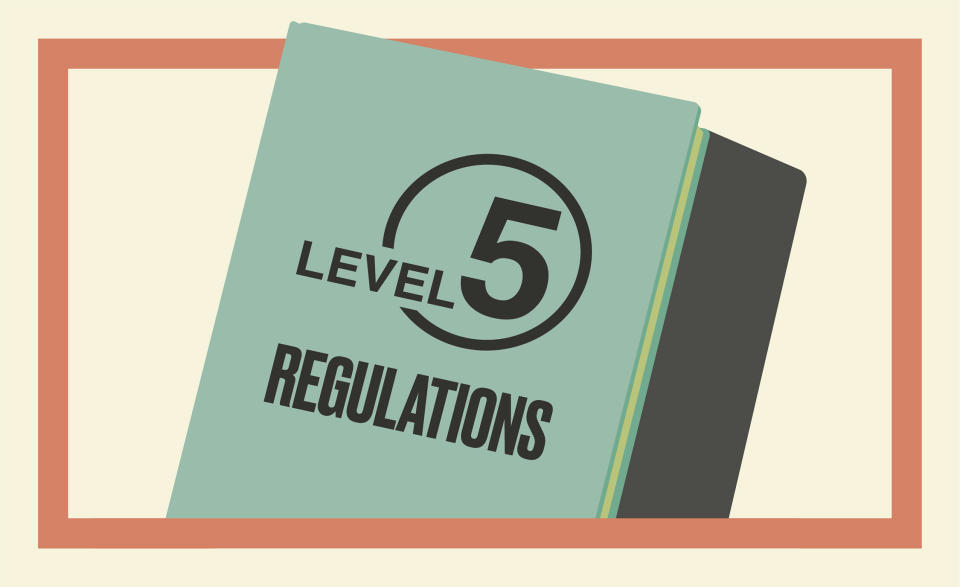Autonomous-Car Regulations: Lawmakers Are Ready To Let Go of the Steering Wheel

Earlier this fall, not long after Senate Republicans sank their party’s seven-year assault on Obamacare, the House of Representatives did something almost unthinkable in the era of Congressional inaction. Two-hundred-and-forty Republicans and 194 Democrats voted unanimously to approve a bill. That bill did not propose a pay raise for Congress or publicly suggest Kim Jong-un suck on a uranium rod. It was actual policy.
Citing the potential safety benefits and economic payoff of robocars, House members established an early framework for driverless-vehicle regulations. Or, more accurately, they established that, in the near term, the rules will be few and far between for such vehicles. When it comes to future regulations in this area, lawmakers appear ready to let go of the steering wheel and hand over control to auto manufacturers and tech companies.
The crux of the SELF DRIVE Act (less coherently known as the Safely Ensuring Lives Future Deployment and Research in Vehicle Evolution Act) gives automakers the ability to request broad exemptions from the Federal Motor Vehicle Safety Standards to deploy their automated vehicles. The most obvious use for these exemptions is a vehicle without the mandated steering wheel and brake pedal, but Brad Stertz, Audi’s director of government affairs, says automakers could also use their exemptions to steer around any of the regulations that were written with the assumption of a human driver at the wheel, such as those covering windshield defrosters and rearview mirrors.
While the proposed language will need to pass the Senate to become law, no legislator has publicly opposed the bill. In its current form, the bill allows an automaker to build as many as 25,000 nonconforming vehicles in the first year it receives an exemption. That allowance tops out at a maximum of 100,000 vehicles annually in the fourth year.
This largely hands-off approach is designed to let the technology drive the legislation, rather than vice versa. It’s the same approach employed by NHTSA, the agency tasked with enforcing vehicle safety for features such as airbags and stability control. Early unregulated airbags that deployed with excessive, sometimes fatal force eventually led to the current mandate for smart systems that detect seatbelt usage and an occupant’s weight. Legislators and regulators believe that any attempt to predict and circumvent those kinds of outcomes would only stifle development of a technology that has the potential to save hundreds of thousands of lives.
The House bill also blocks any state law that dictates the design, construction, or performance of what the feds call “highly automated vehicles.” Manufacturers have openly complained for years that the nation’s patchwork of state laws makes it difficult to develop and sell a car across the country. That fear likely would manifest as technical legalese rather than philosophical obstruction, as no state has passed legislation that is hostile toward driverless vehicles. At the moment, New York remains the biggest question mark due to a 1971 law that requires a driver to keep one hand on the steering wheel at all times while the car is in motion.
In large part, the SELF DRIVE Act should assuage companies’ concerns that their science projects could be sidelined by legislators. Even with a green light to build outside the current regulations, though, manufacturers won’t flood our roads with robocars the day after such a bill becomes law. “The conventional wisdom for years has been that automated vehicles are ready and that it’s the law or lawyers that are holding them back, and that’s empirically, demonstrably incorrect,” says Bryant Walker Smith, an assistant professor of law and engineering at the University of South Carolina. “Developers of these systems aren’t necessarily sure about their own technologies’ applications or business cases. In some cases, they’re not sure how safe is safe enough from an internal perspective, from a design perspective, and how they’ll demonstrate that internally, much less externally.”
In October 2016, Tesla announced that all its cars would be built with the hardware to support its Full Self-Driving Capability option. Buyers can prepay $3000 for the feature with the expectation that Level 5 capability will be enabled with an over-the-air software update at an unspecified date. Tesla’s website buys the company indefinite cover with a disclaimer: “Self-Driving functionality is dependent upon extensive software validation and regulatory approval, which may vary widely by jurisdiction.” But given that any Tesla bought today abides by the FMVSS, that U.S. law operates with the presumption of legality, and that no state has intentionally blocked driverless vehicles, the regulations are largely a scapegoat at this point. The Wall Street Journal reports that more than a dozen members of Tesla’s Autopilot team have left in recent months over rushed deadlines and reckless marketing decisions.
“I made a prediction a while back [of] the two things to look for to conclude that automated driving is truly imminent,” Smith says. “The first is developers of these technologies saying specifically what legal changes, if any, they need to deploy.” The House’s SELF DRIVE Act is the first realization of those requests. Smith’s second bellwether has yet to ring. “The other thing to look for is developers starting to say publicly what safety means to them and how they’re going to ensure the safety of their systems .”

 Yahoo Autos
Yahoo Autos 